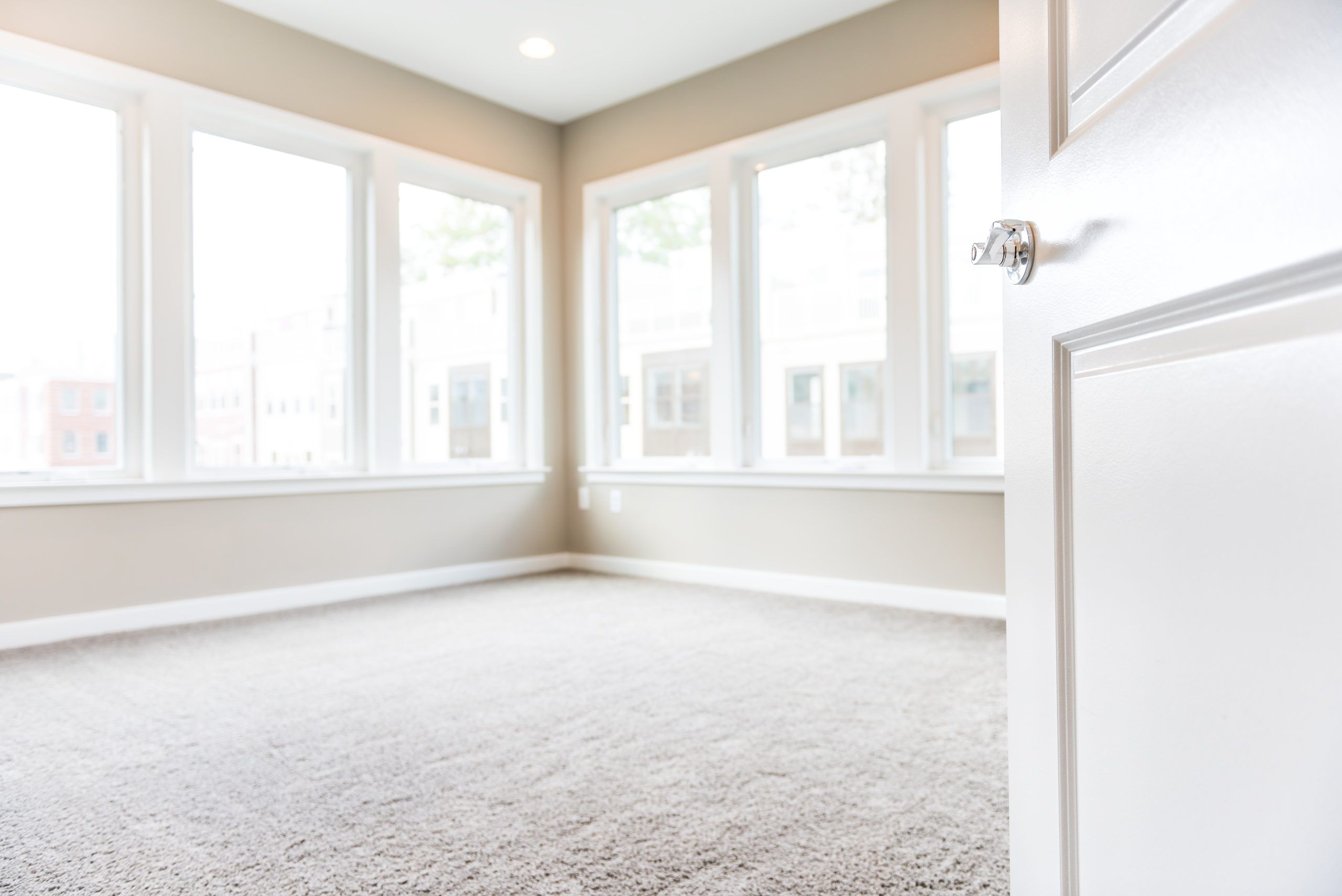How Can There be Pest Issues After Moving to a New Home?
How Can There be Pest Issues After Moving to a New Home?
Moving to a new home is a truly exciting time, whether the new destination is a new house, a previously-owned house, an apartment, a condo, or even a dorm. It is the perfect time for a fresh start and a bright outlook on the future in this new space. But, just like anything in life, the moving process is never as we imagine it to be. There are plenty of ways that something can go wrong with the old home, the new place, or the belongings that are being moved. One such way that can evoke frustrations is if pests invite themselves to the moving party and create more work for you overall. But how can pests invade when neither home is completely furnished and organized? This is the question we will answer today, as we know that moving is enough work without the added stress of a pest invasion!
A Problematic Beginning

There are few things more frustrating when moving than finding out that your new home comes with problems that were not previously known. Whether the home is brand new or previously owned, it should be pest-free when you are moving all of your belongings inside. Any potential pest problems or annual issues that arise during a particular season should hopefully have been discussed before hand, but it is not a huge deal if this was not the case. Every home is different, but there are some areas that are more susceptible to early pest issues than others.
One common area, and something that should be taken care of ASAP, is any wood damage. This includes water damage, decay, mold, and dry rot, among other issues. There are a couple of reasons why this is a major problem. One is that it could be a safety hazard if the damage is on a beam or post that is holding up the house. Another is that wood-boring pests are known for infesting damaged wood more often than clean wood. Termites, carpenter ants, carpenter bees, and powderpost beetles all seek out preferably-damaged wood to use as their homes. Make sure to inspect your new home for wood damage and any signs of wood-boring pests, like tiny holes, wood shavings, discarded wings, and droppings.
Another area that could pose a problem for you as you move into a new home is the landscaping. No matter how large or small your yard is, it still has the potential to carry built-in pest issues. Plants and flowers in general are pest havens, but it gets worse if they are not in great condition. Plant decay, overripe fruit, and weeds all attract pests that can do some real damage to your greenery. Fruit flies lay their eggs on mushy fruit, while gnats and aphids breed in the soil. The more overgrown the plants are, the more pests you will have. Yard work is not fun for many people, but it is essential for your plants’ health and pest prevention. Make sure to spend some time cleaning up the landscaping after you finish unpacking.
There are also issues that can arise from specific housing scenarios. A home that has been owned before may come with more than just some interesting paint colors. If there were pest problems that were not properly solved, you may have just inherited a colony of pests. Or, if there is not a current pest infestation, there may be a certain species or category of pest that this home struggles with every year. If there are any cracks in the walls, near baseboards, or in the kitchen, these may be utilized by some tiny foragers. There is not a guarantee that you will have a pest problem with a previously-owned home (please don’t panic!), but it is something to keep in mind as you start unpacking all of those boxes.
On the other hand, a new build is not without its potential problems as well. There may be less of a risk because it was just built and inspected, but it is not immune to pests. The largest reason pests could be invading this new space is actually because it was just built. The house or complex was built on a previously-empty plot of land, which means that there were likely tons of tiny critters inhabiting this land before a new building popped up. Since the habitats of insects, arachnids, and rodents were likely disturbed, they may have decided to inhabit your home as a major necessary upgrade. Any cracks or gaps in the foundation of the home will probably be utilized by these pests. Besides the actual structure being out in the open, the building materials were also left in the building zone. Some pests may have found these materials irresistible and decided to camp out in them. It is not a guarantee that this happened, but it is a definite possibility.
Common Pests in Vacant Homes

Whether the home was previously lived in or not, there was a gap where no one was inhabiting the place. This time frame may have been utilized by the pests of the area who did not get the memo that there will be some new residents moving in soon. Of course, the specific pests in that neighborhood depend on the region and season, but these are some of the more common pests that like to be part of the moving-in process (as much as we don’t want their help).
Ants – Unfortunately, moving homes does not always mean getting a break from ants. They are attracted to all kinds of food and the workers are excellent scavengers for their colony. They leave trails to food sources as they go along, which leads the rest of their team to that same spot in order to gather as much sustenance as possible. They will eat most food items, but ants do have a preference for anything sugary. This is a potential problem for any home, but it is a larger risk when there is opened food that is not stored properly. And when you’re moving in and just eating snacks and takeout when you need a break, there are more food sources for ants than we would like there to be.
Flies – You can likely guess why this pest is so common for a home that is currently being moved into. Leaving the doors open for ease of transporting boxes and furniture is the standard, and it helps to open some windows for a nice cross-breeze during the temperate seasons. But this is also a golden opportunity for flies of all kinds to enter the scene. They are also drawn to food and drinks of all kinds, and love trash filled with organic matter. But this is exactly why we do not want them walking all over our food at any time. Flies have taste receptors on their feet, so they walk over everything they land on. This is why they carry over 100 pathogens and can cause health issues, including food poisoning, if they contaminate our food after enjoying some trash.
Spiders – Spiders are the weird middle-ground of pests, where they help us by eating a lot of tiny insects, but are also creepy and potentially harmful. Some people like to keep them around for natural pest control, which is your own choice if that is what you want to do. But this does carry the risk of the spiders reproducing and leaving you with hundreds of tiny spiders to live with. And if the spider is venomous, like the brown recluse or black widow, it is dangerous to have anywhere near people or pets. Spiders like to keep to themselves and often stay in the corners and hidden areas of rooms where they can catch their prey, but this means they can go unnoticed while unpacking if they hide in a closet or under a box that is not moved for a while.
Wasps & Bees – These pests are typically only outside issues, but this is still a problem when they get territorial about their nests that they just happened to place right next to the main walkways. Each stinging pest species has its own nest type and personality, but they all carry the obvious risk of stinging anyone who bothers their nest. Some nests, like from the wasps or hornets, are tucked under eaves and on the siding of the home where they may be hidden from you until it’s too late. Hornets are extremely aggressive, which makes this fact somehow worse. Yellow jackets keep their nests underground, which is fine until it is under the pathway or the deck and someone walks on it. Bees are much more docile, but they will still put up a fight if they feel their colony is threatened by the people who actually live in this new home.
Roaches – It’s time to discuss the pest that even an optimistic person likely can’t find a positive trait about: the cockroach. They are the garbage disposals of the pest world, as they eat everything in sight. This can be fine when they consume garbage and waste (as disgusting as those thoughts are), but it is also a major reason why they carry so many diseases and pathogens on them. One of their favorite materials is cellulose, which is found in cardboard. So if you are using a lot of older cardboard boxes to move your belongings, you may want to dispose of those quickly. Roaches are known by their long antennae, flat bodies, and large numbers due to rapid reproduction, so you will definitely know if you have this issue. They also love moisture, so any leak or leftover water in sinks and tubs will definitely be an attractor for these awful pests.
Weevils & Pantry Pests – Yes, there is a category of pests called “pantry pests” (more on this later). This may not seem like a big deal while you are still moving in and don’t have a stocked pantry yet, but they can still appear in this early stage. They eat all kinds of processed foods and dried items, and they are unfortunately small enough to live in these places without being noticed by us. Some people like to stock up on the essentials (flour, rice, pasta, sugar) right after moving in, but this can mean that pantry pests are also setting up shop in these new materials. Food storage and containers are crucial in making sure that you are not starting life in your new kitchen with pest-infested ingredients.
No matter which pests may be plaguing your new home, it is important to get the issue resolved as soon as you can. Pest infestations are much easier to solve when there are less pests in the area. But, even if you thankfully do not have any current pest problems, there are still some tasks to do to set yourself up for some pest-free success.
The Right Way to Have a Fresh Start

As busy as you are with unpacking and arranging the furniture – why is it always so difficult to put the couch exactly where you want it? – there are quite a few chores to be done in order to get the place clean and organized, as well as to prevent any of the aforementioned pests. There may be more specific tasks to complete depending on the size and type of home you now have, but these are just some ideas to get you started on your journey to a new home without any unwanted pests hosting a housewarming party.
- Inspect all provided appliances for leaks or gaps – washer, dryer, dishwasher, air conditioning unit, refrigerator
- Repair any holes and tears in window/sliding door screens
- Keep all food items and pet food stored in airtight containers
- Check for and repair any leaks in and under sinks, tubs, showers, etc.
- Keep all trash stored in closed cans and bins
- Clean crumbs and spills as they appear
- Fill all gaps, cracks, and crevices near the doors, windows, baseboards, etc.
- Use new cardboard boxes and plastic containers for packing and storage
- Use mattress protectors to prevent bed bugs and dust mites from infesting the mattresses
- Check less-populated rooms (garage, basement, attic) for anything out of the ordinary: leaks, moisture, pests, nests, nest shrapnel, wood damage, holes
- Check all clothing, furniture, and luggage as you unpack for any pests or evidence of pests
One of the best times to begin pest control services, although there is not technically a “bad” time, is right after moving into a new home. You can start off on the right foot and be one step ahead of the pests by getting every issue treated at the start. Also, if you are still unpacking everything, it gives the technicians more space to inspect and treat for any otherwise hidden pest problems. Our team of licensed and experienced technicians are happy to treat all kinds of pest problems for you in order to provide you with a pest-free home to enjoy. Contact us today for a free quote and to learn more about our EPA-approved services that will leave you with more time to focus on setting up your new dream home.
Citations
Removing and preventing bugs after moving to a new home. (n.d.). Raid. Retrieved August 30, 2022, from https://www.raid.com/en-US/education/home-living/removing-and-preventing-bugs-after-moving
How to get rid of bugs indoors. (n.d.). Ortho. Retrieved August 30, 2022, from https://www.ortho.com/en-us/library/bugs/how-get-rid-bugs-indoors
Glover, E. & Allen, S. (2021, December 8). 7 most common insects to look out for in your new home. Forbes Home. Available at https://www.forbes.com/home-improvement/pest-control/common-household-bugs/ (Accessed on August 30, 2022).
McFarlane, J. (2021, March 1). How to identify bugs in your home – bed bugs, termites, cockroaches, ants and more with pictures. Real Homes. Available at https://www.realhomes.com/advice/how-to-identify-bugs-in-your-home (Accessed on August 30, 2022).
5 pests to avoid during your move. (2016, January 20). Wheaton Worldwide Moving. Available at https://www.wheatonworldwide.com/2016/01/20/5-pests-to-avoid-during-your-move/ (Accessed on August 30, 2022).
8 Creative Ways to Have a Pest-Free Fourth of July
8 Creative Ways to Have a Pest-Free Fourth of July 8 Creative Ways to Have a Pest-Free Fourth of July Summary: The Fourth [...]
A Simple Guide to Preventing Stinging Pests
A Simple Guide to Preventing Stinging Pests A Simple Guide to Preventing Stinging Pests Summary: Stinging insects are more active in warm weather, [...]
These 10 Natural Mosquito Repellents Can Actually Help
These 10 Natural Mosquito Repellents Can Actually Help These 10 Natural Mosquito Repellents Can Actually Help Summary: Natural mosquito repellents are easier to [...]
How to Get Rid of Carpet Beetles
How to Get Rid of Carpet Beetles How to Get Rid of Carpet Beetles Summary: Carpet beetles are sneaky pests that don’t usually [...]
How Do Roaches Affect Asthma and Allergies?
How Do Roaches Affect Asthma and Allergies? How Do Roaches Affect Asthma and Allergies? Summary: It’s no secret that pests impact human health, [...]
These 5 Carnivorous Pests Might Surprise You!
These 5 Carnivorous Pests Might Surprise You! These 5 Carnivorous Pests Might Surprise You! Summary: There are many eco-friendly ways to prevent pests, [...]

